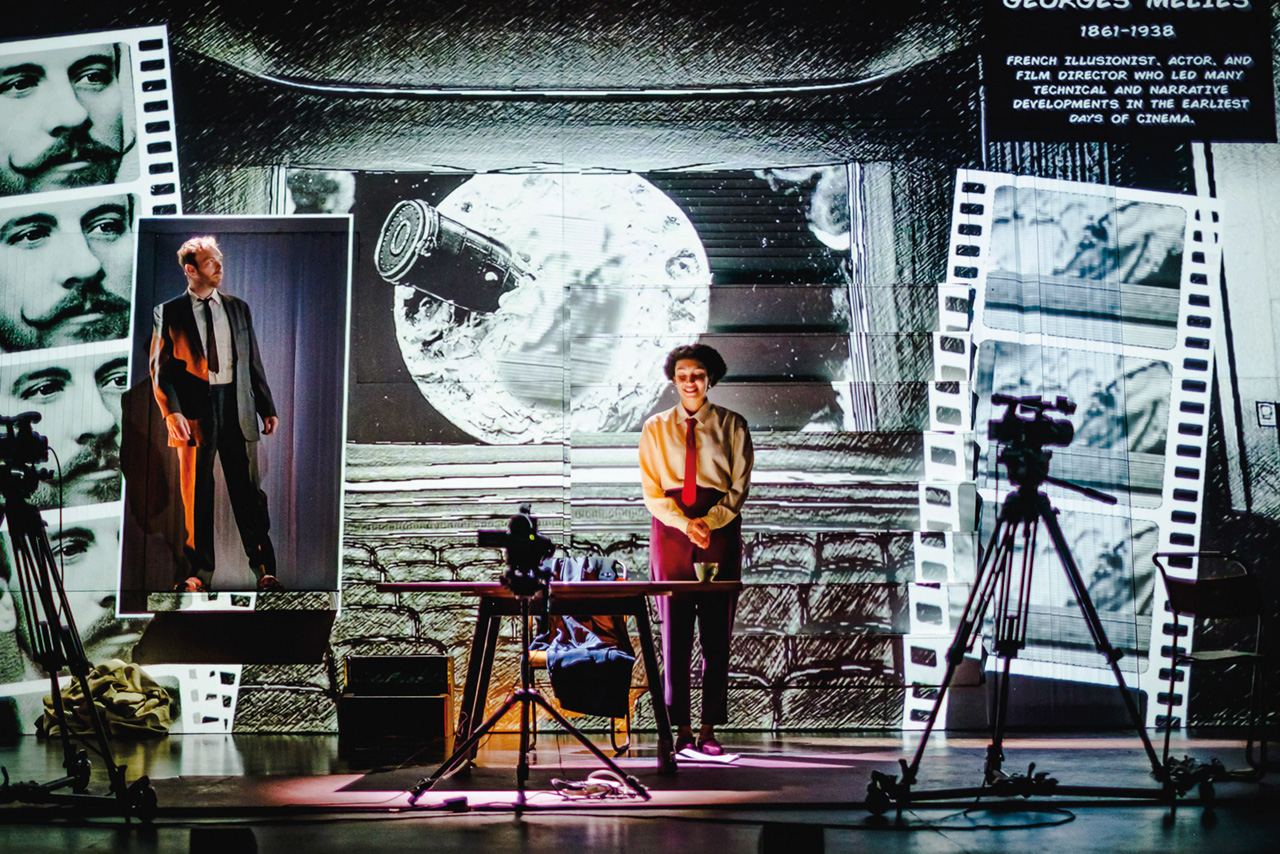Out for the count
A classic horror story is used as the framework for a dizzying multimedia live action graphic novel. Dan Whitehead speaks to the creative team breathing fresh life into Dracula
He’s one of the most ubiquitous characters in pop culture, but multimedia theatre company Imitating the Dog have come up with an ingenious way to make Count Dracula scary and relevant again in 2021.
Opening at the Leeds Playhouse on 25 September, Dracula: The Untold Story uses cutting edge technology to tell an all-new tale about the legendary bloodsucker in the form of a live-action graphic novel. Having already adapted Conrad’s Heart of Darkness and George Romero’s Night of the Living Dead into ambitious video-assisted live performance pieces, the company knew it wanted to keep exploring the darker side of human (and inhuman) nature.
“We came at it like a lot of our work, through cinema really,” says Andrew Quick, the show’s co-writer and co-director. Having considered a stage version of F W Murnau’s silent movie classic Nosferatu, they eventually came back to the source: Dracula. “It relates to two interests that definitely frame our work, the Gothic and the horror genre.”
Bram Stoker’s timeless yarn is well-suited to Imitating the Dog’s media mashup approach to stagecraft, given that the novel itself is a patchwork of letters, diary entries and other scraps of information rather than linear prose.
“It was quite experimental for the time, and that appeals to us for sure,” admits Simon Wainwright, who creates the show’s projections and video designs. “There’s a large screen behind the performance where we composite live camera feeds and pre-made material into what looks like a graphic novel. That sort of fragmentation very much suits the way we work. The scattered approach forces an audience to do a lot more work than maybe they’re used to.”
Dracula: The Untold Story takes place in a world where the monstrous count was a real historical figure, not a literary character, and opens in the 1960s as a young woman, claiming to be the 80-year-old Mina Harker, enters Marylebone police station and confesses to murder. The shift in era is no mere stylistic affectation.
“At the turn of the 19th century, there was a lot of change and the novel reflects a certain anxiety and excitement about that, but also nostalgia for real certainty about what was good and bad. I feel that the 1960s was another moment where things were changing in a really fast-paced way,” says Quick. “And it’s the same again now,” adds Wainwright.
It’s also notable that the popular regal image of Dracula originated from Bela Lugosi’s star-making turn on stage in the 1920s. Untold Story prefers Stoker’s original concept.
“He’s more of a shape changer”, says Quick. “In the novel he’s a wolf or a bat and or mist or slime or ooze, much more non-human, a kind of entity. He moves around the world and infests certain characters from history with what might be classed as evil.
“It’s a story people know and are really interested in. Even if they never read the novel, they have an idea of what the story is through films, or just the different interpretations of the vampire story. We felt we had a very rich landscape to react to. We wanted to do a Dracula that felt that it was relevant to today.”
Dracula: The Untold Story is on at Leeds Playhouse from 25 Sept-9 Oct then tours until 13 Nov

Leave a reply
Your email address will not be published.